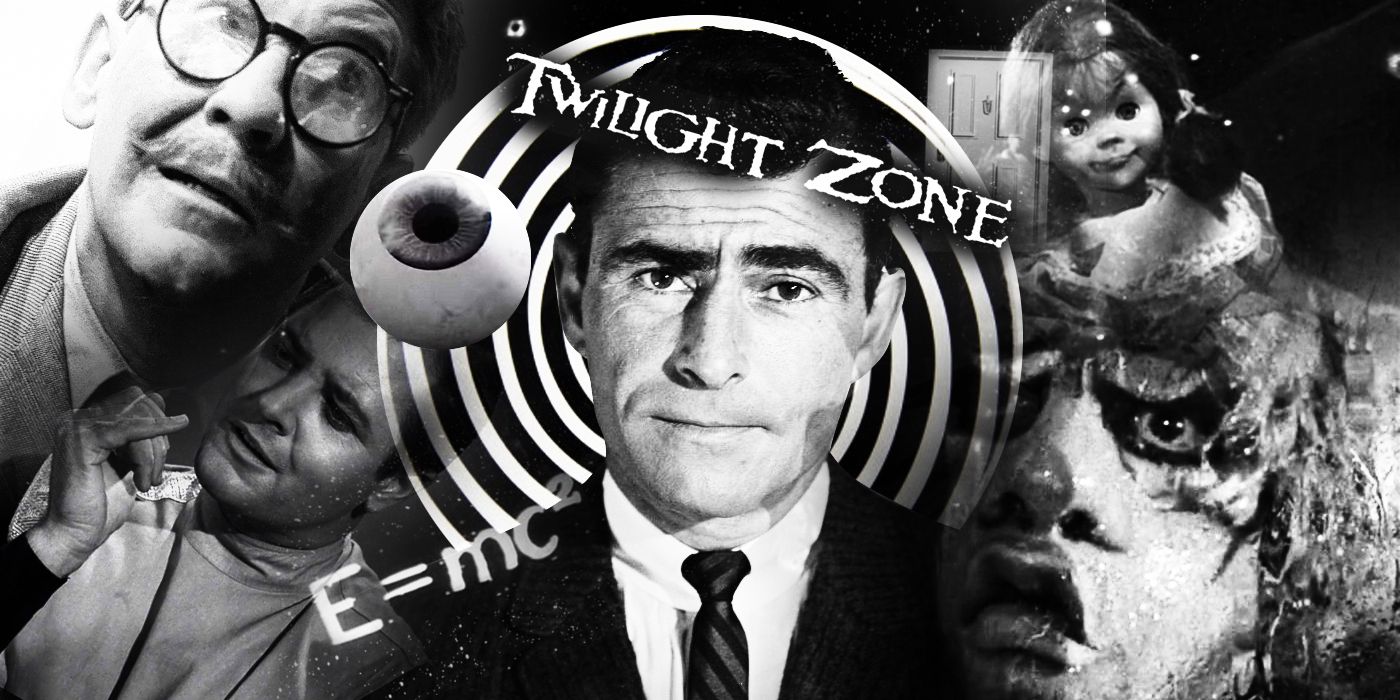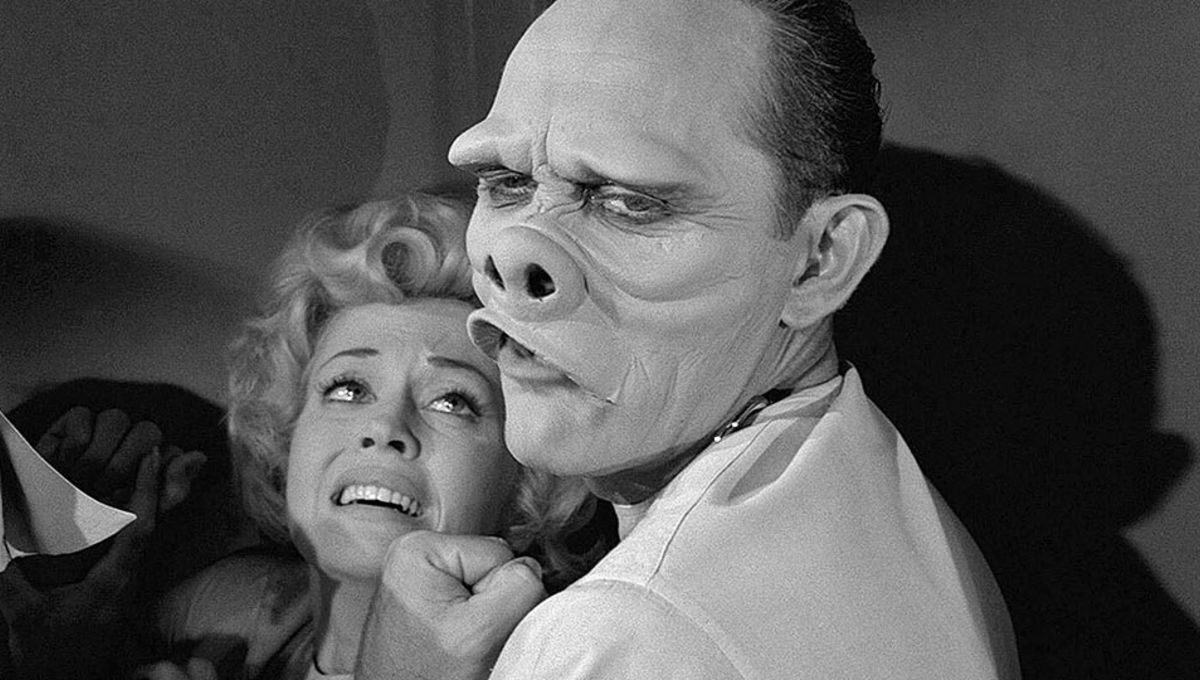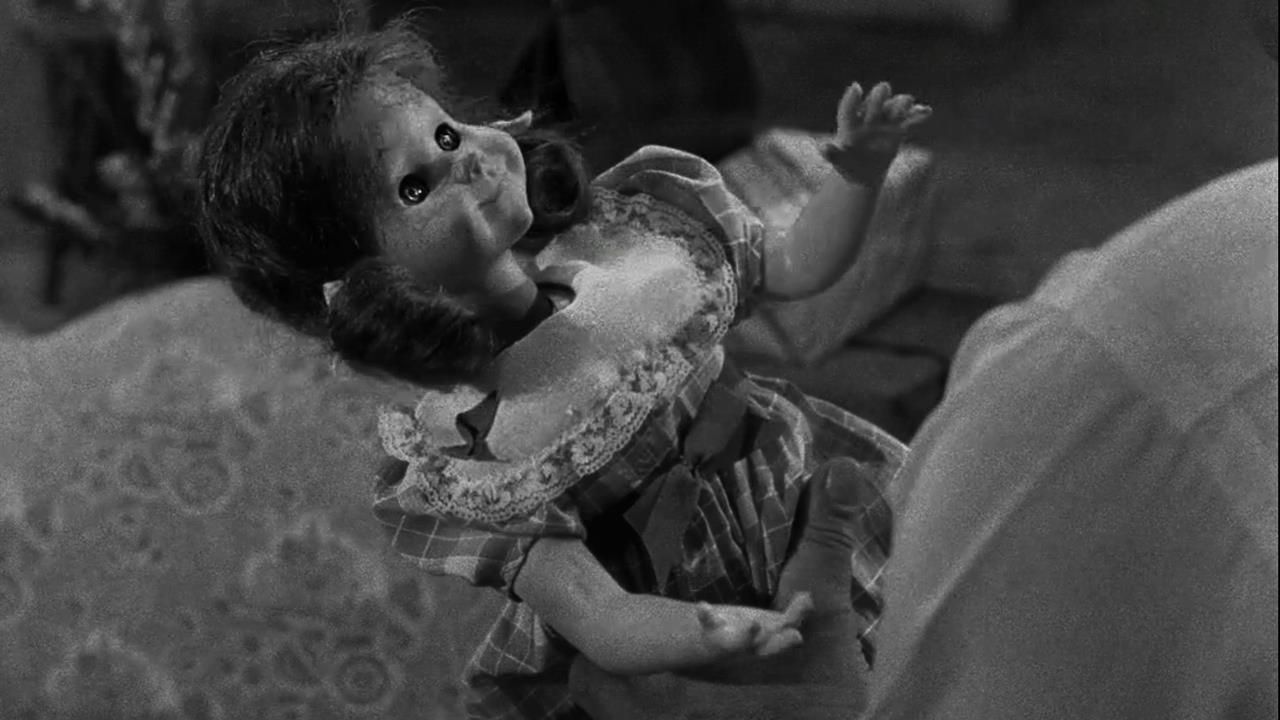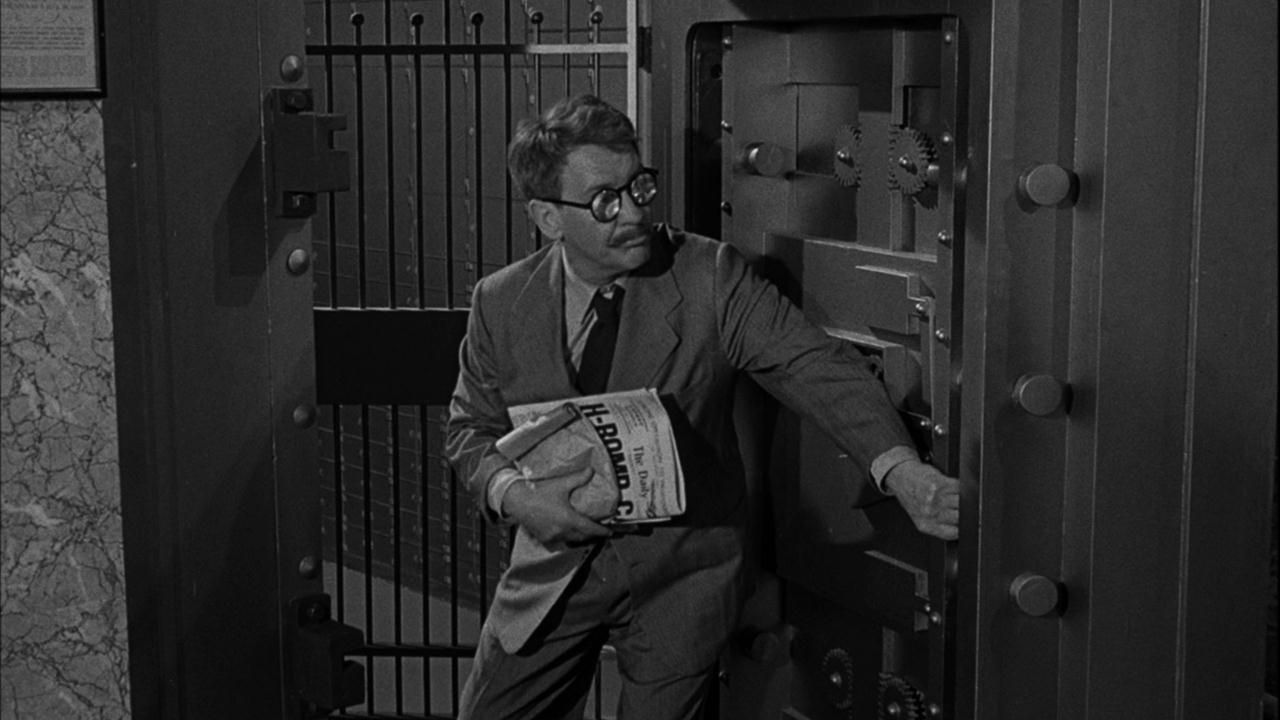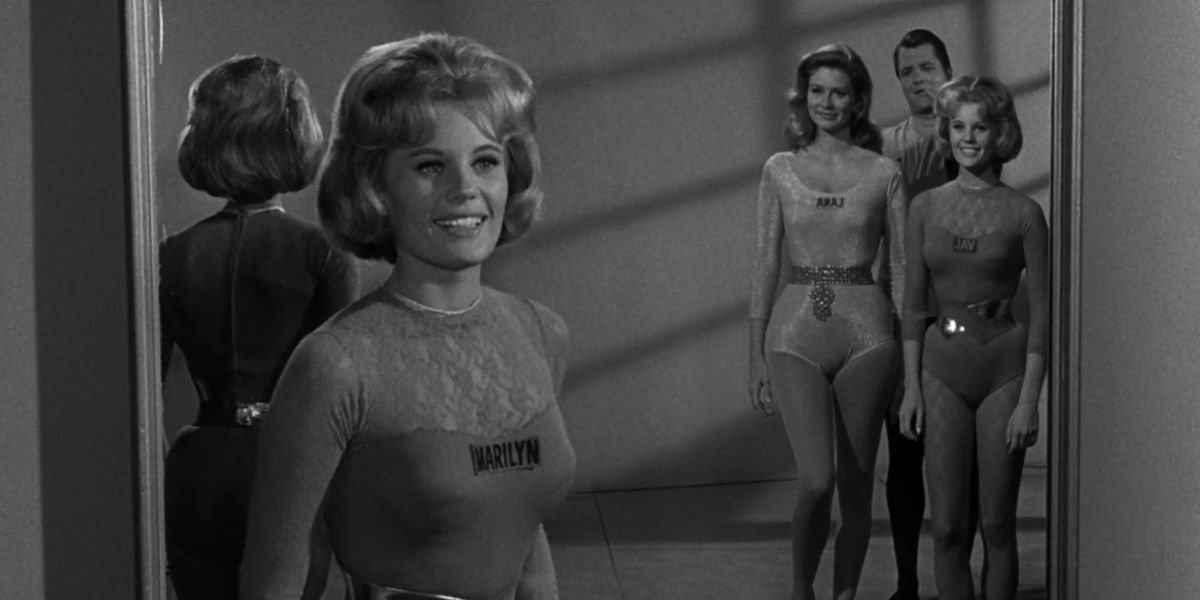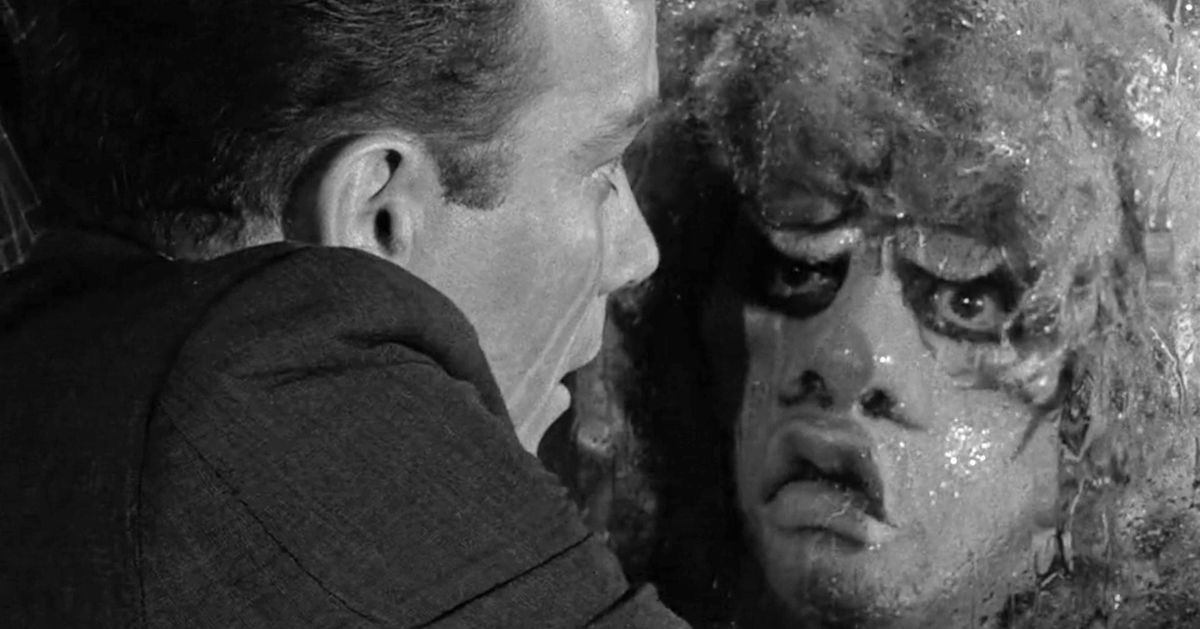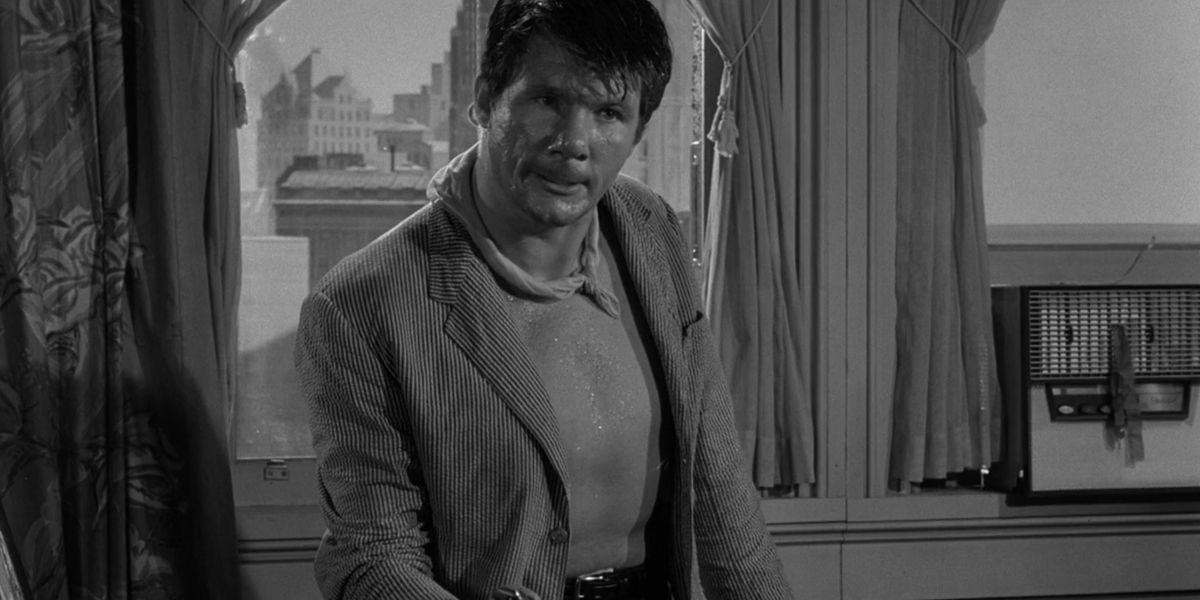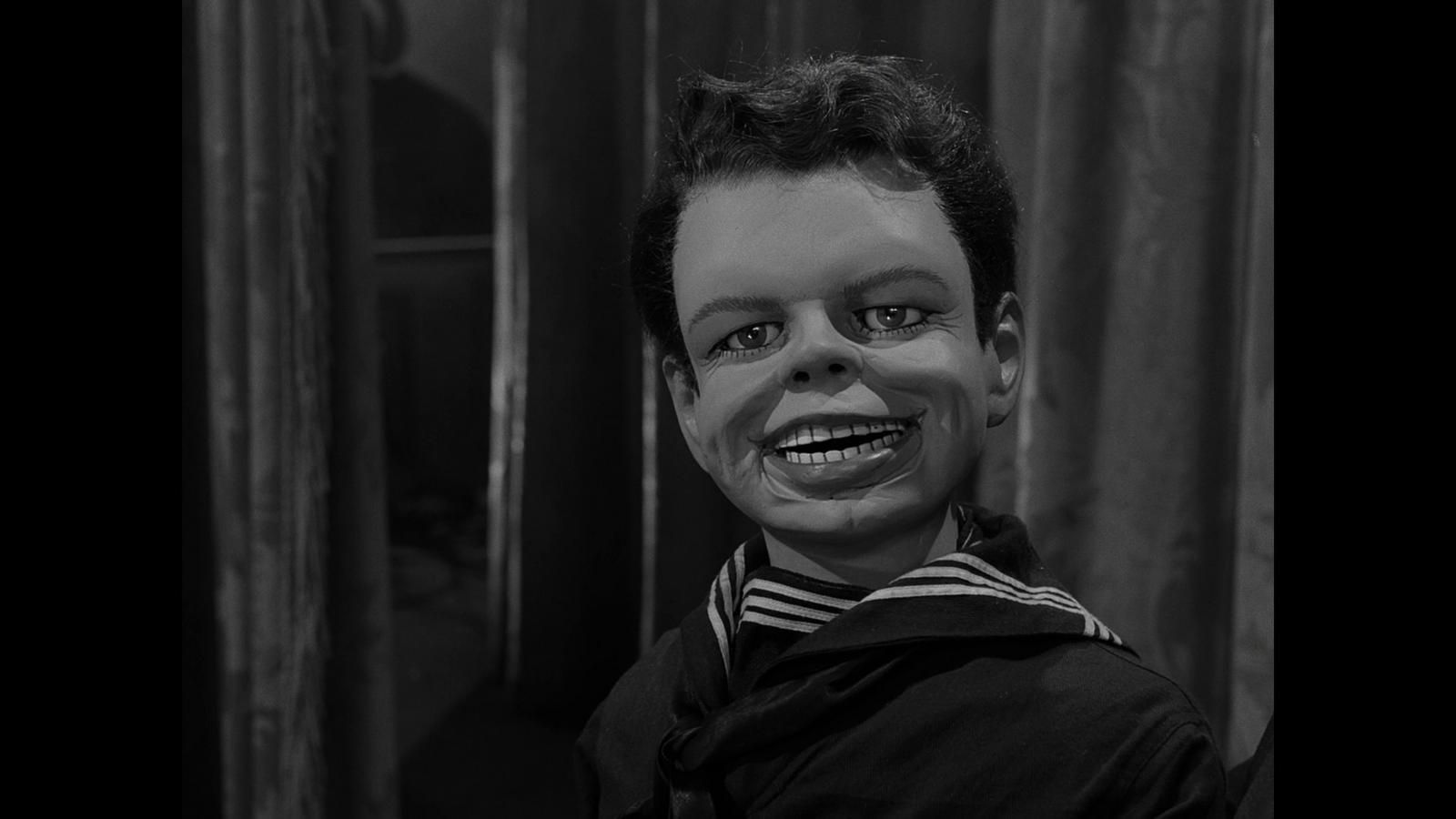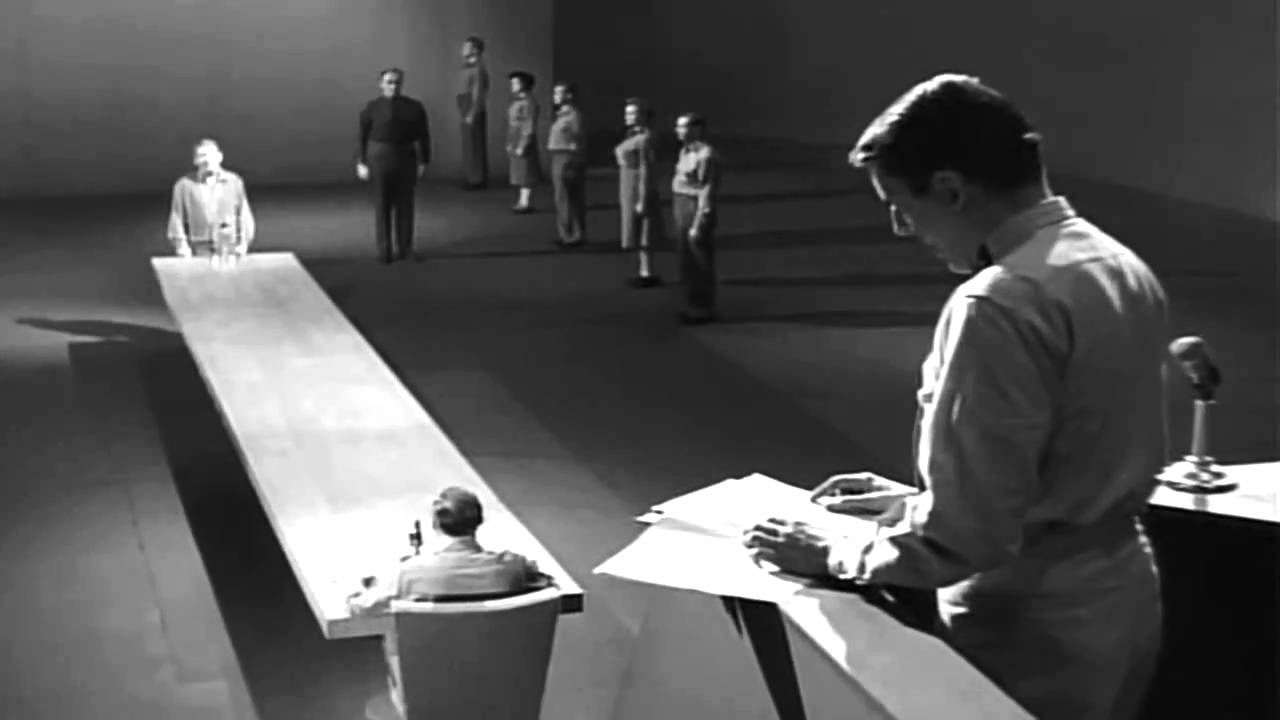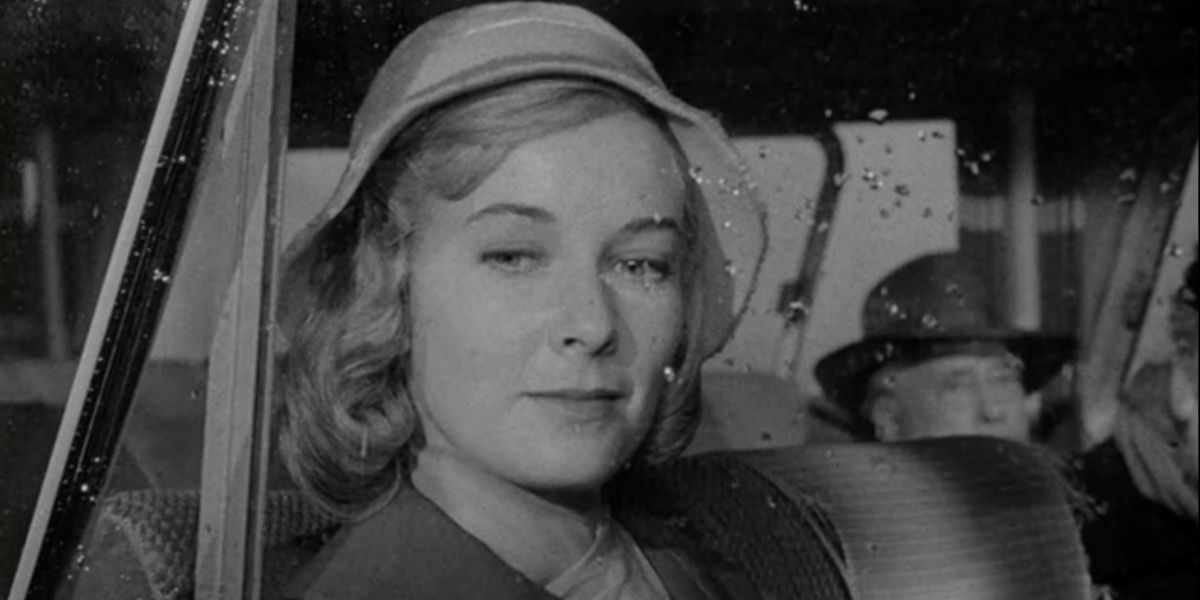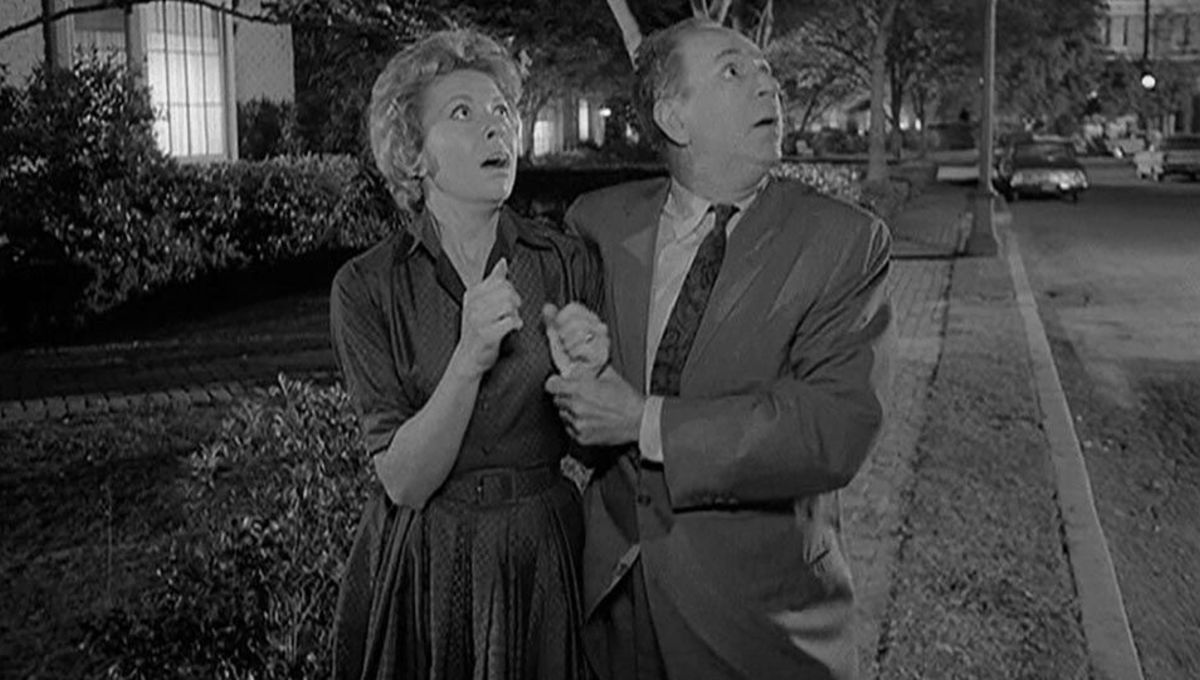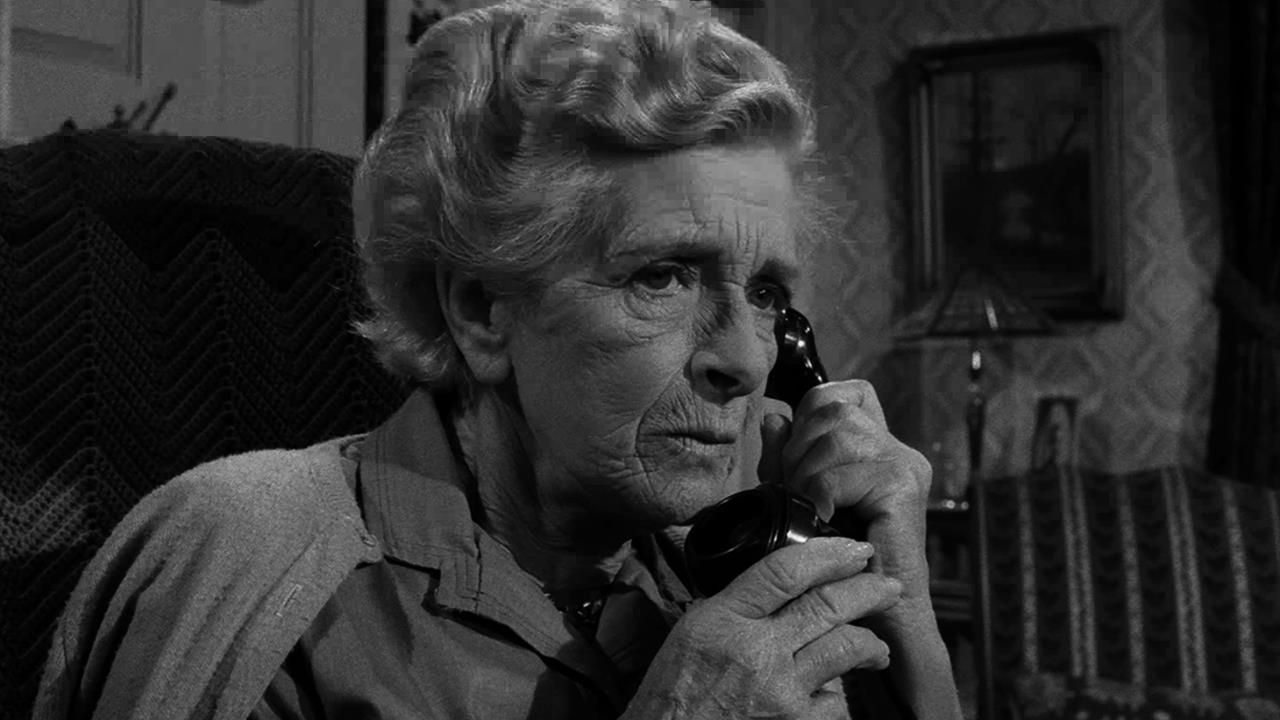Since the advent of streaming, sci-fi anthology shows are more prevalent than ever. Shows like Black Mirror (Netflix), Electric Dreams (Amazon Prime Video), and Bloodride (Netflix) are just the tip of the iceberg in terms of recent offerings. But in the early sixties, the idea of the sci-fi anthology series was a much fresher concept. Perhaps one of the most groundbreaking and influential is the original run of The Twilight Zone (cue spooky theme music) that ran on CBS from 1959 to 1964 for five seasons. Now, one feature-length film and three revivals later (in 1985, 2002, and, most recently, the 2019 revival helmed by executive producer Jordan Peele) The Twilight Zone remains cemented in public conversation (and nightmares) by continuing to stoke the fires of viewers’ fears, both the rational and not-so-rational.
Despite the number of reboots, revivals, or even updates of the classic black-and-white to color, the original Twilight Zone remains the creepiest and nightmare-inducing iteration of the series. With dolls come to life, alien invasions, dystopian societies, and threats of looming apocalypse, Twilight Zone features more than enough instances to solidify its status as a powerhouse in showing viewers both human and inhuman horrors. Here are 11 of the creepiest, most spine-tingling episodes of the show’s original run that will keep you up at night. Your next stop, the Twilight Zone!
"Eye of the Beholder" (Season 2, Episode 6)
Being different from everyone around you can instill fear and anxiety even in the most confident of people. The lack of ability to conform to a specific group, no matter how hard you try, can leave you lost and afraid, uncertain if you'll ever find where you belong. That's the case when a bandaged woman named Janet (Maxine Stuart and Donna Douglas) is admitted to the hospital for a surgical procedure to treat a facial deformity. Her face is completely covered in bandages and it's her hope that as a result of the surgery she'll finally be beautiful. But when the doctor removes her bandages, we don't see the deformities that we might be expecting. Instead of scars, bruises, or sunken features, what we see is, to our human eyes, the normal facial features of a regular woman. It's only when the doctors and nurses take off their masks, revealing squished faces with snout-like noses, that we realize that what we perceive to be ugly and abnormal is actually typical in this society while "human" beauty is something so ugly that it must be corrected by surgery. Aside from the nightmare-inducing creature effects and the chilling dystopian concept of the elimination of individuality, the episode holds a mirror up to ourselves and forces us to consider our definition of beauty. Is it what somebody looks like? How they act? How they think? After all, even if we look like everyone else, we might be the real monsters.
"Living Doll" (Season 5, Episode 6)
Before there was Chucky or Annabelle, there was Talky Tina, the "doll that does everything, a lifelike creation of plastic and springs and painted smile." But is she really as sweet as she looks? When Annabelle Streator (Mary LaRoche) buys her daughter Christie (Tracy Stratford) a Talky Tina doll to comfort her, the doll is quick to speak her pre-programmed catchphrase ("My name is Talky Tina, and I love you very much") to everyone...except Christie's cruel new step-father, Erich (Telly Savalas). To him, Tina's words take a much more sinister turn with phrases like "My name is Talky Tina and I don't think I like you" and "My name is Talky Tina and I'm going to kill you." As if the domestic horror and tension inside the Streator house aren't scary enough, "Living Doll" plays with the fear that comes from experiencing horrors you are positive exist while knowing that no one believes you. After all, what's more terrifying than something inanimate taking on a life of its own and trying to kill you? Paired with Talky Tina being voiced to creepy perfection by June Foray, the episode solidifies itself as a Twilight Zone classic — and pure nightmare fuel.
"Time Enough at Last" (Season 1, Episode 8)
What's more terrifying than finally getting all the time in the world to do the one thing you always wanted to do...only to have it ripped away from you in an instant? This is what happens when bibliophile Henry Bemis (Burgess Meredith), having survived the nuclear apocalypse, stumbles upon the ruins of a library. Thrilled that he finally has time to catch up on his reading (and that there's no one else in sight to disturb him), he surrounds himself with stacks of books. But in one of the show's cruelest twists, Henry steps on his glasses, shattering both his lenses and any chance of him reading anything ever again. It's frightening enough to imagine permanently losing sight, but "Time Enough at Last" raises even scarier concepts such as that of perpetual loneliness and how losing a piece of your independence can make the endless stretch of time before you seem maddening and nearly unbearable. After all, is it worthwhile to survive something as awful as nuclear war if we're miserable? It's an uncomfortable question that forces us to look deeper into ourselves for the answer. And we might not like what we find.
"Number Twelve Looks Just Like You" (Season 5, Episode 16)
If given the chance to pick another body for yourself, would you do it? This is the question that is being asked in "The Number Twelve Looks Just Like You." In a futuristic society, all nineteen-year-olds are forced to undergo a process called "The Transformation," where their physical bodies will be changed in the image of one of the society's pre-approved models. But free-thinking and book-loving eighteen-year-old Marilyn Cuberle (Collin Wilcox) chooses to rebel and keep her original body, attracting the displeasure of society's lawmakers. In addition to the terrifying concept of being forced to alter your body against your will, the episode is a masterclass in instilling a sense of fear. After all, shame for being different and being told that you're not good enough as you are aren't foreign concepts. They're real and they happen every day. Here, the episode posits that maybe our society isn't as far removed from that of the Twilight Zone as we think. While we're not forced to undergo a radical "Transformation," that's a pretty scary thought, indeed.
"Nightmare at 20,000 Feet" (Season 5, Episode 3)
Flying in a plane is scary enough. Each time we fly we're putting our lives in a stranger's hand as we're hurtling through space and hoping for the best. But "Nightmare at 20,000 Feet" adds an extra dimension to aerophobia when salesman Robert Wilson (William Shatner) is the only passenger to see a massive, shaggy gremlin appear on the wing of the craft. Is he hallucinating, or is there really a creature tampering with the plane? "Nightmare" plays well with the ideas of paranoia, being able to trust your own perceptions (even when they don't align with others'), as well as the obvious terror of coming face to face with a horrible monster. The creature effects and costuming are a bit dated (and some of the acting tends to be on the melodramatic side), but the episode more than makes up for its shortcomings with its psychological dread...and making us think twice whenever we're on an airplane. You know, just in case.
"The Midnight Sun" (Season 3, Episode 10)
A disturbance with Earth's orbit is causing the planet to drift into the sun and the temperature to skyrocket. Norma (Lois Nettleton) and her neighbor Mrs. Bronson (Betty Garde) are the only residents left in their New York City apartment building, the rest having died or tried to flee the oppressive heat. Eventually, they know, they, too, will die. As the temperature rises to 110 degrees to 120 degrees to 130 degrees, the heat causes mental stress and physical exhaustion in both women and they finally succumb to the inhospitable temperature, collapsing in the apartment. But when Norma wakes up to snow and cold, we realize that the heat and Earth hurtling towards the sun were just products of Norma's fever dream. But the situation is no better. In fact, it's just as dire but a polar opposite. Instead of the Earth hurtling towards the sun, it's actually moving away from it, causing the Earth's inhabitants to freeze to death.
"Midnight Sun" is bold (and scary) in showing that just because we wake up from our nightmares doesn't mean that they're over. In fact, they might just be a different side of the same coin. Both Norma and Mrs. Bronson are helpless to do anything to improve their dire situation other than wait as the temperature grows more and more severe. Here, The Twilight Zone shows us the ugly (and scary) truth that while humans always want to fix things, it's frightening to admit that there are some terrifying situations that we are powerless to control or improve.
"The Dummy" (Season 3, Episode 33)
"The Dummy" is another of The Twilight Zone's forays into exploring the fearful idea of a doll coming to life. In this case, it's the dummy of ventriloquist Jerry (Cliff Robertson) who believes that his tiny terror, Willie, is actually alive. Of course, in true Twilight Zone fashion, no one else believes him. "The Dummy" is successful largely due to the creep-tastic old-fashioned design of the dummy (seriously, have you ever seen a more terrifying creation?!) and Cliff Robertson's vocal performance of Willie. But add in the fear that comes with no one believing a claim of which you are certain — and being forced to wonder if you really might be going crazy (especially if everyone else thinks so) — and "The Dummy" is elevated from merely "scary" status to that of pure psychological terror.
"The Obsolete Man" (Season 2, Episode 29)
In an episode reminiscent of dystopian novels like 1984 and Fahrenheit 451, "The Obsolete Man" also deals with similar themes of breaking free from the confines of dictatorship and conformity, individuality, and personal and political freedom. A man (Burgess Meredith) is put on trial because he is a librarian and the totalitarian state has banned books. As such, he is deemed "obsolete," which is really just a kinder way of the State saying, "Hey, man! Your free-thinking ways are a threat to our oppressive rule!" and sentenced to death. The episode is not frightening due to overt horror elements like cringe-worthy creatures, creepy aliens, or chilling special effects; "Obsolete Man" gives us something to fear in its presentation of its ideas. After all, what's more frightening than the idea of being sentenced to death over reading a book or being a librarian, a profession whose very job is to enrich the lives of others? Not to mention that the mere thought of expressing political and religious freedoms could be seen as criminal offenses. A world without books? Excuse me for second. I'll be cowering in the corner.
"Mirror Image" (Season 1, Episode 21)
What if you looked across a busy bus depot to see someone that looked exactly like you? This is the premise of "Mirror Image" and for Millicent Barnes (Vera Miles) it doesn't go well. Not only does she become convinced that her double is trying to kill (and replace) her, but nobody believes her claim. The mere suggestion that there might be someone out there that looks and sounds exactly like us, waiting to eliminate us and take over all aspects of our lives, is frightening enough. After all, how would our friends and family know that we weren't really ourselves? But where this episode shines is through its demonstration of Millicent's paranoia and planting the scary seed in viewers' minds that the universe is full of horrors we haven't even begun to scratch the surface of yet. If you never did a double-take when you caught sight of someone wearing the same outfit as you, well...you will now.
"The Shelter" (Season 3, Episode 3)
In an episode that mirrors our past year more than we might like, "The Shelter" concerns what happens when a group of friends and neighbors hear the news that unidentified objects have been spotted hurtling towards Earth. What first starts out as a jovial birthday party for Bill Stockton (Larry Gates) soon turns disastrous as the partygoers, composed of his family and friends, begin vying for a place in Bill's basement fallout shelter. "The Shelter" isn't a particularly scary episode in terms of visual frights but it is horrifying in showing how fear and tragedy can (and ultimately will) bring out the worst in the people that were previously clearheaded and rational — fierce paranoia, violent panic, and an animalistic instinct for self-preservation. In the end, it makes us wonder: if we are unable to remain civil in times of crisis, are we even worth saving at all?
"Night Call" (Season 5, Episode 19)
Whoever has been awakened in the middle of the night by a strange phone call knows how much of a terrifying jolt it can be. It's the same feeling for an elderly woman (Gladys Cooper)...except the mystery calls continue. She continues to yell at the caller to leave her alone before realizing that it's the voice of her dead fianceé. But her joy at realizing her love has returned to her is only temporary as he quickly leaves her, saying that he always did what she told him to do. The kicker? What she told him to do was to go away, leaving her with a dead line in a cold and lonely bedroom. With one of its signature narrative twists, this episode of Twilight Zone is both heart-wrenching and terrifying on a fundamentally human level. If we put ourselves in the shoes of the elderly woman, confined to her home and alone forever, faced with the knowledge that she pushed away the one person she loved most, we're able to appreciate just how scary and daunting the situation would be — always hoping that the phone will ring but knowing that it won't.
For viewers looking for further nightmares, you can stream The Twilight Zone on Hulu and Paramount+.

